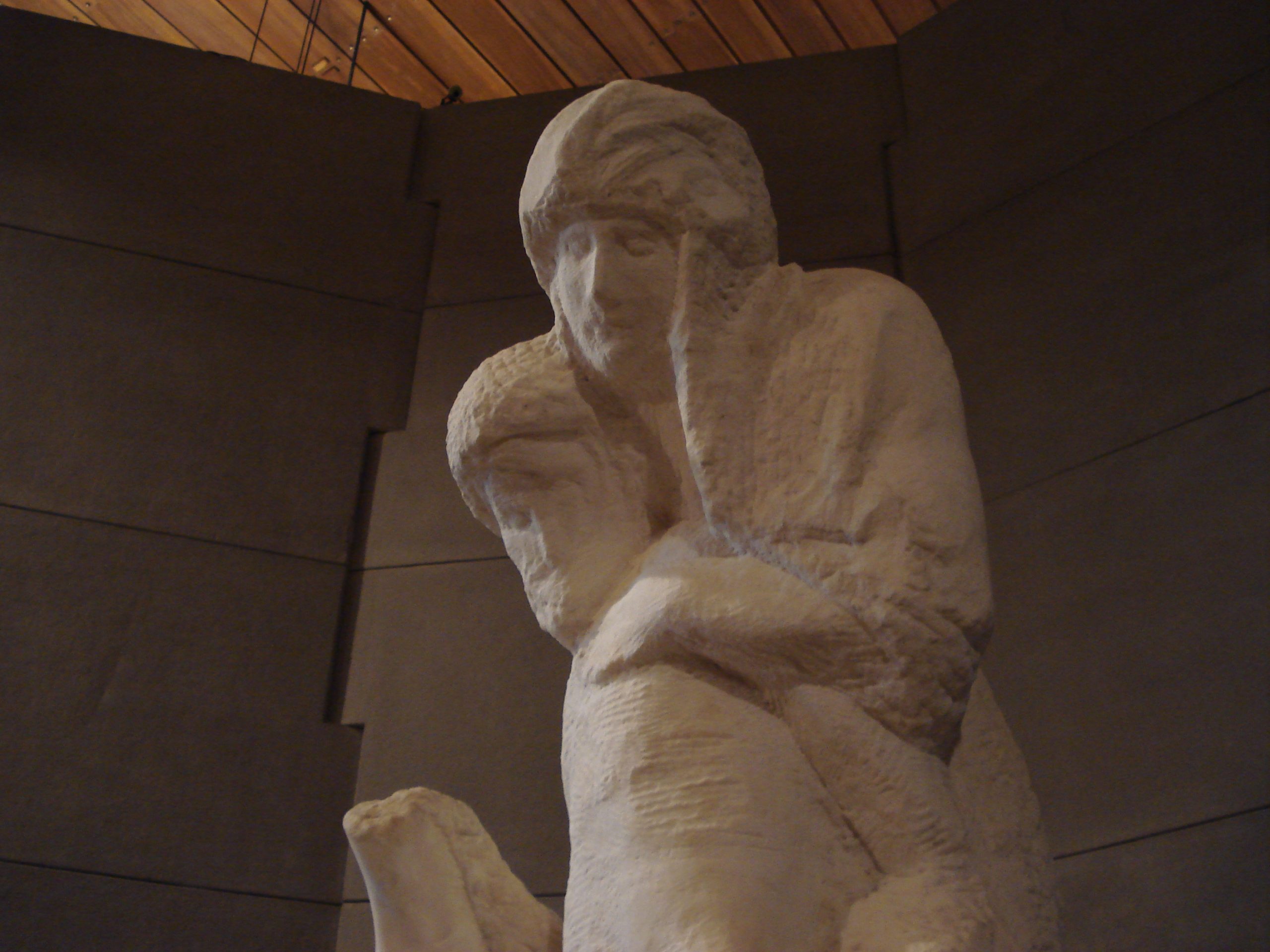Pietà Rondanini is a marble sculpture that Michelangelo worked on from the 1550s until the last days of his life, in 1564. Always housed in the Museum of Ancient Art of Sforza Castle in Milan, it will be now moved within the Ospedale Spagnolo in the Castello Sforzesco.
The final sculpture revisited the theme of the Virgin Mary mourning over the body of the dead Christ, which he had first explored in his Pietà of 1499. Like his late series of drawings of the Crucifixion and the sculpture of the Deposition of Christ intended for his own tomb, it was produced at a time when Michelangelo’s sense of his own mortality as well as his spirituality) was growing.
The Rondanini Pietà was begun before the Deposition, although in his dying days Michelangelo hacked at the marble block until only the dismembered right arm of Christ survived from the sculpture as originally conceived. The spectral, waif-like Virgin and Christ are a departure from the idealised figures that exemplified the sculptor’s earlier style, and have been said to bear more of a resemblance to the attenuated figures of Gothic sculpture than those of the Renaissance.































